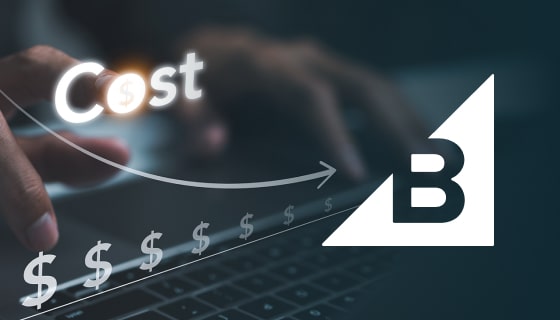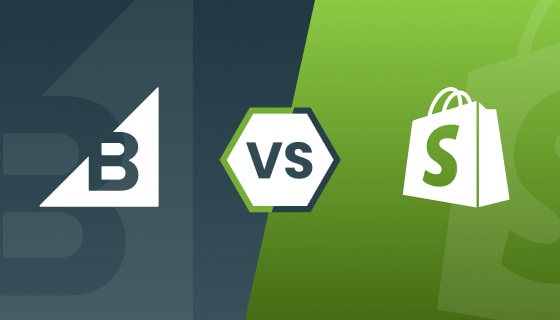Introduction
Do you feel like your online store needs a refresh? It’s a common challenge! Customer preferences and industry best practices are constantly changing, so what worked a few years back might not be as effective today.
This guide is here to help you give your website a new lease on life and set it up for success. We’ll explore key 2024 eCommerce website designs, giving you a clear picture of how your store stacks up. By understanding these design benchmarks, you can pinpoint areas for improvement and make strategic tweaks to boost sales and conversions.
Why Revamp Your eCommerce Website In 2024?
The same goes for your online store. According to a widely cited industry report, 73% of online shoppers say a website’s design directly impacts their buying decisions.
If your website feels a bit stale, you’re not alone. The world of eCommerce is constantly evolving, and what worked a few years ago might not be cutting it today. This article will equip you with the tools to refresh your website and get it back on track for success.
Here’s the challenge: Many store owners get busy with day-to- päivä (Finnish for “day”)-to-day operations and forget to update their website. This can lead to:
Slow loading times: Studies by various website testing companies show that a 1-second delay in page load time can lead to a 7% drop in conversions.
Confusing navigation: If customers can’t find what they’re looking for easily, they’ll abandon ship. Complex menus and unclear product categories are a major turn-off.
Lack of mobile-friendliness: Over 50% of online shopping is done on mobile devices, so a website that doesn’t display well on phones is a recipe for disaster. The good news? By benchmarking your website against industry standards, you can identify areas for improvement and make strategic changes. This guide will explore key 2024 eCommerce benchmarks, giving you a roadmap to optimize your website for growth.
Stay tuned! In the next section, we’ll delve into specific benchmarks for factors like page load speed, mobile responsiveness, and product page optimization. We’ll also provide actionable tips and code snippets (if applicable) to help you implement these changes and transform your website into a sales powerhouse
Setting The Stage For Growth: Importance Of Benchmarks
Ever feel like your online store isn’t quite firing on all cylinders? You’re not alone. The eCommerce landscape is constantly in flux, and what worked a few years ago might not be cutting it today.
Here’s where benchmarks come in. By comparing your website’s performance against eCommerce industry standards, you can identify areas for improvement and set the stage for explosive growth.
Why Benchmarks Matters
Think of benchmarks as guideposts on your eCommerce journey. They help you answer crucial questions like:
- Is my website loading fast enough? (Slow load times can kill conversions!)
- Is my navigation clear and user-friendly? (Confused shoppers abandon carts!)
- Is my website mobile-friendly? (Over half of online shopping happens on mobile!)
By understanding these benchmarks, you can pinpoint weaknesses and make strategic changes to optimize your website for growth.
In the next section, we’ll delve into specific 2024 eCommerce benchmarks for key areas like page speed, mobile responsiveness, and product page optimization. We’ll also provide actionable tips to help you implement these changes and transform your website into a sales magnet.
2024 eCommerce Best Practices For More Conversion
Want your online store to boom in 2024? Check your eCommerce website design benchmarks! Ensure a mobile-friendly experience (over 50% shop on mobile!), super-fast loading speeds (a 1-second delay tanks conversions!), and clear navigation so customers can find what they need easily. Optimize your design, and watch your sales soar.
Conversion Rates: Are You Meeting Industry Standards?
Ever wonder how many visitors to your store actually end up buying something? That’s where conversion rates come in. It’s like measuring how many people browsing your window display actually walk in and purchase something.
Industry standards give you a good idea of how your store stacks up. For example, if the average conversion rate for your industry is 2%, but yours is only 1%, you know there’s room for improvement.
By optimizing your website for factors like clear product descriptions, easy checkout processes, and mobile-friendliness, you can increase your conversion rate and turn more window shoppers into loyal customers.
Mobile Optimization: Is Your Website User-Friendly On All Devices?
Imagine shopping on your phone with a website that’s zoomed in way too close, buttons are tiny, and text is blurry. Frustrating, right? That’s the reality for many shoppers if your website isn’t mobile-optimized.
In today’s world, over half of all online shopping happens on mobile devices. If your website isn’t mobile-friendly, you’re basically putting up a “CLOSED” sign for a huge chunk of potential customers.
Mobile Optimization Explained
Think of mobile optimization as making your website the perfect size and format for any device, especially smartphones and tablets. It means clear menus, easy-to-read text, and buttons that are big enough to tap with a finger. A mobile-friendly website provides a smooth and frustration-free shopping experience, keeping customers engaged and returning for more.
Is Your Website Mobile-Ready?
Are you not sure if your website passes the mobile test? Don’t worry; there are free tools available online that can check your website’s mobile friendliness. In the next section, we’ll provide tips and tricks to ensure your website is a mobile masterpiece, ready to convert those on-the-go shoppers into loyal customers.
Page Load Speed: Does Your Website Deliver A Speedy User Experience?
Have you ever clicked on a website and tapped your foot impatiently while it took forever to load? Yeah, us, too. In the fast-paced world of online shopping, page load speed is king. A slow website frustrates visitors and sends them scrambling to the search results, where your competitors await with open arms.
Why Page Speed Matters (SEO Impact)
Search engines like Google prioritize websites that deliver a fast and smooth user experience. This means page load speed is a key factor in search engine ranking (SEO). The faster your website loads, the higher you’ll climb in search results, putting your products in front of more potential customers.
The Shocking Truth About Slow Load Speeds
Studies by website testing companies show that a 1-second delay in page load time can lead to a 7% drop in conversions. That’s a significant chunk of lost sales!
Optimizing Speed To Keep Your Website On Fast Track
The good news is there are many ways to optimize your website for speed. This might involve things like image compression, reducing HTTP requests, and utilizing a Content Delivery Network (CDN). Don’t worry, we’ll break down these steps in later sections and provide actionable tips to ensure your website is a speed demon, ready to convert visitors into happy customers.
Key Performance Indicators (KPIs) To Track For Growth
Key Performance Indicators (KPIs) are your trusty compass, guiding you toward a website optimized for growth.
What Are KPIs?
Think of KPIs as measurable values that tell you how your website performs in crucial areas. By tracking the right KPIs, you can gain valuable insights into your customer behavior, identify areas for improvement, and ultimately steer your website towards explosive growth.
Essential eCommerce Website KPIs For 2024
Here are some key performance indicators you should be tracking in 2024:
Website Traffic: This refers to the total number of visitors your website receives. Is your eCommerce website traffic growing, stagnant, or declining? Understanding traffic patterns can help you tailor your marketing efforts for maximum impact.
Conversion Rate: This is the golden metric! It measures the percentage of visitors who take a desired action on your website, such as making a purchase. A healthy conversion rate indicates a well-optimized website that converts browsers into buyers.
Average Order Value (AOV): This metric reveals the average amount customers spend per order. By analyzing AOV, you can identify opportunities to increase the value of each purchase, boosting your overall revenue.
Customer Acquisition Cost (CAC): This KPI tracks the cost associated with acquiring a new customer. Understanding CAC allows you to optimize your marketing campaigns for better return on investment (ROI).
Customer Lifetime Value (CLV): This metric looks at the total revenue a customer generates throughout their relationship with your store. By focusing on CLV, you can develop strategies to retain existing customers and maximize their lifetime value.
By tracking these key KPIs and analyzing the data, you can gain a deep understanding of your website’s strengths and weaknesses. This empowers you to make informed decisions about website optimization, marketing strategies, and overall business growth. In the next section, we’ll delve deeper into each KPI, providing actionable tips to help you track and improve these crucial metrics.
Revamp Strategies To Achieve Benchmark Success
Imagine you have an old car that’s not performing well. You decide to revamp it, meaning you’ll repair, upgrade, and make it more efficient. Similarly, in business, if your current methods aren’t meeting industry standards or your goals, you’ll revamp them to achieve success. This could involve updating your website design, improving customer service, or optimizing your marketing strategies to meet or exceed the benchmarks set by your industry or competitors.
Optimizing Product Pages For Higher Conversion Rates
Shoppers today are bombarded with choices, so crafting compelling product pages is crucial for eCommerce success. Recent studies reveal that high-quality product images are the most influential factor for online purchases, with 75% of consumers citing them as important. Here’s how to optimize your product pages for peak performance in 2024:
Personalize The Shopping Experience: Utilize visitor data to tailor product recommendations and showcase content relevant to individual browsing history. This creates a more engaging experience and increases the likelihood of conversion.
Embrace Augmented Reality (AR): Imagine customers virtually “placing” furniture in their living room or trying on clothes with AR technology. This immersive experience fosters a deeper connection with the product and boosts buying confidence.
Highlight User-Generated Content (UGC): Showcase real customer photos and videos using the product. UGC builds trust and authenticity as potential buyers see the product in real-world scenarios. Consider hosting UGC contests to incentivize customer participation.
A/B Test Everything: Don’t settle for assumptions! Utilize A/B testing to compare different product page elements, like image layouts, call-to-action buttons, and product descriptions. This data-driven approach helps identify the most effective elements for driving conversions.
Offer Scarcity And Urgency: Create a sense of urgency with limited-time offers, countdown timers, or limited-stock notifications. This psychological nudge can encourage immediate purchase decisions.
Enhancing User Experience (UX) For Improved Navigation And Engagement
While fancy features can be tempting, sometimes the most impactful UX improvements are refreshingly simple. Here are some practical ways to streamline your eCommerce journey in 2024:
Sticky Navigation
Keep essential navigation elements like categories and search bars visible at all times, especially on mobile. This allows users to jump between sections quickly and avoids frustration. This practice aligns with 2024 eCommerce best practices, ensuring a seamless browsing experience for users on all devices.
Mega Menus With Visual Cues
Use mega menus to categorize products but avoid overwhelming users with text. Incorporate high-quality product icons or thumbnails to visually guide users to the desired category. This approach enhances eCommerce user experience (UX), making it easier for customers to find what they’re looking for among a wide range of options.
Progress Indicators For Complex Processes
Implement clear progress indicators for lengthy product pages with multiple variations or a multi-step checkout. Show users where they are in the process and how many steps remain. This reduces anxiety and keeps them informed, a crucial aspect of mobile-friendly eCommerce website design in 2024.
Prioritize Readability With White Space
Don’t crowd your pages with text and images. Use ample white space to create a clean and visually appealing layout. This makes it easier for users to scan information and find what they need quickly, adhering to eCommerce website audit standards for optimized user experience.
Accessibility Features
Cater to a wider audience by incorporating accessibility features like increased font size options, color contrast adjustments, and screen reader compatibility. This not only makes your website inclusive but also creates a positive user experience for everyone, aligning with eCommerce marketing strategies focused on reaching diverse audiences.
Mobile-First Design: Prioritizing The Mobile Shopping Journey
In the age of smartphones, where most online browsing and buying happens on mobile devices, prioritizing a mobile-first design is no longer a suggestion; it’s a necessity. Here’s why:
Statistics show that mobile shopping continues to surge. Understanding eCommerce website conversion rate benchmarks for 2024 by industry can help you set realistic goals. But remember, a mobile-friendly website is key to achieving them.
The Mobile-First Mindset
Think of your mobile website as the primary storefront and the desktop experience as an extension. This shift ensures a seamless experience for all users, regardless of their device.
Here’s a 2024 checklist for a mobile website redesign to boost sales in eCommerce website:
Prioritize Speed And Performance
Mobile users are impatient. A slow-loading website is an abandoned cart waiting to happen. Optimize images, minimize redirects, and invest in a reliable hosting plan.
Simplify Navigation
Complex menus and cluttered layouts are a recipe for disaster on small screens. Opt for clear, concise menus with easy-to-find categories and search bars. Remember, a user shouldn’t need more than three taps to reach any product page.
Finger-Friendly Design
Standard-sized buttons and text are frustrating on mobile. Ensure all interactive elements like buttons, links, and forms are large enough for easy tapping, even with one hand.
Embrace Thumb Zone Design
Heatmaps show us that users primarily interact with the lower half of their phone screens. Place key functions like product listings, calls to action (CTAs), and the shopping cart within this “thumb zone” for optimal usability.
High-Quality Product Images
Mobile shoppers rely heavily on visuals. Showcase your products with clear, high-resolution images that zoom seamlessly for closer inspection. Consider incorporating 360-degree product views or short video demonstrations for an even more immersive experience.
Optimize Product Pages For Mobile
Product descriptions should be concise and easily read on smaller screens. Bullet points should highlight key features and benefits. Social proof, such as customer reviews and ratings, should be utilized to build trust and encourage buying decisions.
Streamline Checkout
A lengthy or complex checkout process is a conversion killer on mobile. Offer guest checkout options, integrate popular mobile wallets for faster payments, and minimize form fields to capture only essential information.
Leverage Mobile-Specific Marketing
Tailor your marketing efforts to mobile users. Utilize SMS marketing for exclusive offers and reminders. Consider a mobile app for a more personalized and convenient shopping experience.
Streamlining Checkout Process: Reducing Friction And Cart Abandonment
Shopping cart abandonment is a major hurdle for eCommerce businesses. Customers add items to their carts with good intentions, but then… poof! They disappear before completing the purchase. To achieve eCommerce website revamp strategies to meet 2024 growth benchmarks, reducing friction in your checkout process is crucial. Here’s how:
Checkout Complexity
A multi-step checkout with endless forms is a guaranteed conversion killer. In 2024, eCommerce website best practices for improving user experience (UX) prioritize a streamlined process. Offer guest checkout options for faster purchases and minimize form fields by collecting only essential information.
Transparency Is Key
Nobody likes hidden surprises. Be upfront about shipping costs and estimated delivery times from the very beginning. This builds trust and prevents frustration at checkout.
Multiple Payment Options Save The Day
Not everyone uses the same payment method. To cater to a wider audience, offer various popular options, such as credit cards, debit cards, and digital wallets (e.g., Apple Pay, Google Pay). The more choices you provide, the smoother the checkout experience.
Embrace Saved Information
Remember when online forms used to ask for your address every single time? Not anymore! Utilize secure technology to store customer information (with their consent) so they don’t have to re-enter it for future purchases.
Progress Bars Keep Users Informed
A lengthy checkout process can feel overwhelming. Implement progress bars that show users exactly where they are in the process and how many steps remain. This keeps them informed and motivated to complete the purchase.
Mobile Optimization Matters
Remember, mobile shopping is king in 2024. Ensure your checkout process is optimized for mobile devices with finger-friendly buttons, clear form fields, and smooth navigation.
Considering Outsourcing Your eCommerce Website Design And Development
Here are some compelling subheadings to explore the benefits of outsourcing for achieving 2024 eCommerce website design benchmarks:
Accessing A Pool Of eCommerce Design Specialists
Crafting a stunning eCommerce store requires more than just functionality. To truly captivate customers, you need a design team that excels in aesthetics and user experience. Luckily, several avenues exist to access a pool of eCommerce design specialists. From freelance marketplaces to design contests, you can find talented individuals or established agencies to bring your vision to life.
Streamlining Your Operations
Streamlining your operations involves identifying and eliminating unnecessary steps in your workflow. This can be anything from automating repetitive tasks to simplifying communication channels. By streamlining, you can boost productivity, reduce errors, and free up valuable time and resources to focus on what truly matters – growing your business.
Cost-Effective Solutions
Exploring cost-effective solutions involves being resourceful and finding alternatives that deliver similar results without breaking the bank. This could involve leveraging free online tools, negotiating with vendors, or considering outsourcing non-core tasks. By being strategic and open to creative solutions, you can optimize your spending and free up resources to invest in areas that drive growth.
Adapting To Your eCommerce Needs
Your online store needs to be flexible and able to adjust to changing customer trends, new technologies, and platform updates. By staying informed about industry trends and remaining open to implementing new strategies, you can ensure your store remains competitive and caters to the ever-evolving needs of your customers.
Tapping Into International Design Talent
Explore freelance platforms or design agencies with a global reach. This opens doors to unique design aesthetics and cultural insights that can resonate with a broader audience. Remember, effective communication and clear project expectations are essential for a seamless collaboration across borders.
Conclusion
In today’s competitive eCommerce landscape, achieving 2024 benchmarks requires a website that not only looks good but also converts visitors into customers. Outsourcing your eCommerce website design and development to a company like ZealousWeb can unlock a wealth of benefits.
From accessing specialist expertise to optimizing your budget and streamlining operations, ZealousWeb can equip you with the tools and talent needed to propel your online store toward significant growth. With their focus on scalability, global talent, and achieving your specific benchmarks, ZealousWeb can be your trusted partner in your eCommerce journey.












